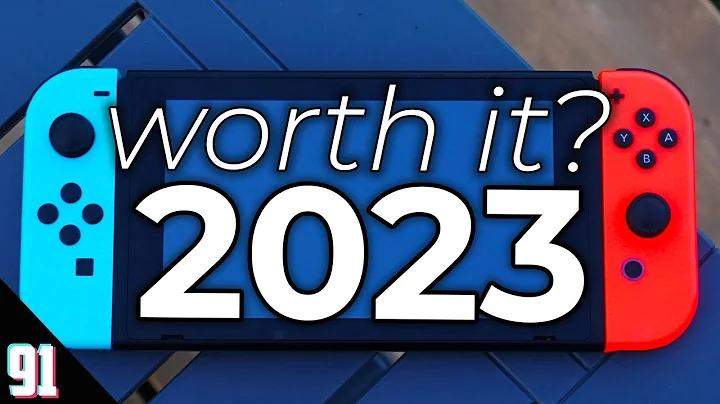Since the middle of the 1990s, PlayStation consoles have consistently been the platform of choice for a significant number of gamers, with the exception of one or two generations. In point of fact, it is not uncommon to hear people use the term "PlayStation" when referring to video game consoles in general. It should come as no surprise that Sony was not the first company to release a console; competitors such as Atari, Nintendo, and Sega had already done so. However, this undoubtedly re-popularized video games and introduced the medium to fresh audiences. The PlayStation 5 is the most recent home console released by the company, but what about its predecessors? We are going to take a look at the history of PlayStation, beginning with the very first console and ending with the most cutting-edge machine currently available. The very first PlayStation was the product of a collaboration that took place in 1991 between Sony Computer Entertainment and the dominant force in the gaming industry, Nintendo. Sony was tasked with developing the machine after the House of Mario expressed interest in producing a CD-based add-on console for the Super Nintendo Entertainment System (SNES) at the time. At the 1991 Consumer Electronics Show (CES), Nintendo announced a partnership with Philips for an add-on instead of competing with Sony, which caught Sony off guard.

Because Sony was reluctant to throw away all of the work that had been put into the machine, the company decided in 1994 to release a PlayStation that could stand on its own. In the United States, the price of $299 was significantly lower than that of Sega's Saturn, which was initially announced by Sony at the Electronic Entertainment Expo in 1995. The PlayStation 1 was among the first generation of consoles that had the ability to display images in three dimensions (3D). It was also arguably the first CD-based console to really gain widespread popularity around the world. This was in contrast to the offering of its main competitor, the Nintendo 64, which continued to make use of cartridges. CDs had much slower loading times than cartridges, but they offered 700MB of data, which was significantly more than the 64MB of storage that later N64 games could hold at most. Because of this, PS1 game designers were able to include a massive amount of in-game content, countless hours' worth of audio tracks and voice acting, and a great deal of video content in their creations.
In point of fact, it wasn't unusual for N64 ports of PS1 games to be missing music tracks, additional voice acting, and/or videos. One example of this is Tony Hawk's Pro Skater. Since the middle of the 1990s, video game consoles manufactured by Sony and sold under the PlayStation brand have been, with the exception of one or two generations, the platform of choice for the majority of players. In point of fact, it is not uncommon to hear people use the term "PlayStation" when referring to video game consoles in general. It should come as no surprise that Sony was not the first company to release a console; competitors such as Atari, Nintendo, and Sega had already done so. However, this undoubtedly re-popularized video games and introduced the medium to fresh audiences. The PlayStation 5 is the most recent home console released by the company, but what about its predecessors? We are going to take a look at the history of PlayStation, beginning with the very first console and ending with the most cutting-edge machine currently available. The original idea for the PlayStation was hatched in 1991 during a collaboration between Sony Computer Entertainment and the dominant force in the gaming industry at the time, Nintendo.
Sony was tasked with the task of developing the machine after the House of Mario expressed interest in producing a CD-based add-on console for the Super Nintendo Entertainment System (SNES) that was available at the time. At the 1991 Consumer Electronics Show (CES), Nintendo announced a partnership with Philips for an add-on instead of competing with Sony, which caught Sony off guard. Because Sony was reluctant to throw away all of the work that had been put into the machine, the company decided in 1994 to release a PlayStation that could stand on its own. In the United States, the price of $299 was significantly lower than that of Sega's Saturn, which was initially announced by Sony at the Electronic Entertainment Expo in 1995. The PlayStation 1 was among the first generation of consoles that had the ability to display images in three dimensions (3D). It was also arguably the first CD-based console to really gain widespread popularity around the world. This was in contrast to the offering of its main competitor, the Nintendo 64, which continued to make use of cartridges. CDs had much slower loading times than cartridges, but they offered 700MB of data, which was significantly more than the 64MB of storage that later N64 games could hold at most.
Because of this, PS1 game designers were able to include a massive amount of in-game content, countless hours' worth of audio tracks and voice acting, and a great deal of video content in their creations. In point of fact, it wasn't unusual for N64 ports of PS1 games to be missing music tracks, additional voice acting, and/or videos. One example of this would be Tony Hawk's Pro Skater. The console was powered by a RISC-based processor running at 33 MHz and a graphics processing unit (GPU) designed by Toshiba. Other bits of silicon were included to ensure high-quality audio and video. Oddly enough, the console did not include dedicated 2D silicon. As a consequence, the graphics of certain 2D games appeared to be superior on competing platforms available at the time, such as the Sega Saturn. After that, in the year 2000, Sony released the PlayStation One, which had a significantly more compact design. And in 2019, the company launched the throwback PlayStation Classic mini-console (which can be seen above), despite receiving mixed reviews for the product.
The Wipeout series, Final Fantasy 7, the Tekken franchise, Gran Turismo 1 and 2, Metal Gear Solid, Ape Escape, the Spyro the Dragon series, and the Crash Bandicoot series are all examples of some of the more well-known series of video games that have been released for the PlayStation. The console was first released with a controller that did not have analog sticks or vibration capabilities; however, in 1997, Sony introduced a Dual Analog controller, which they later renamed the "DualShock" controller. During its time on the market, the PlayStation console in question would not be the only one to go through a controller revision after this one. Sony also released a special console aimed at developers called the Net Yaroze PlayStation. This console, which allows users to create their own games, was given the name "Net Yaroze PlayStation."These PlayStation consoles are currently among the most coveted items in the collectibles market for PlayStation fans. There was a flaw in certain models of the PlayStation console that, over time, would have an effect on the laser. This would cause games to be unable to load and other technical issues. What is the answer?
Flip your PlayStation console over so that the screen is facing down. It was possible to remove some games (such as Ridge Racer) from the disc drive and continue playing them because the entire game was loaded into the console's 2 megabytes (MB) of random access memory (RAM). Later on, Sony released an accessory for the Pocket Station that was comparable to the VMUs that Sega produced for the Dreamcast. This device, which was essentially a memory card with a screen and on which you could play simple games, was capable of storing and transferring data.








